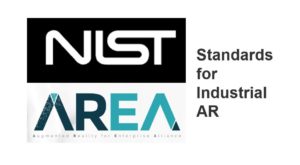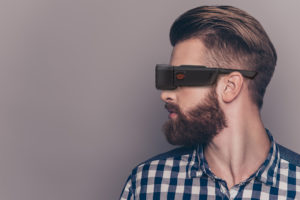Taqtile Focuses on Eliminating the Skills Gap for Frontline Workers

There’s a growing problem affecting multiple industries. Experienced workers are retiring at an alarming rate, while equipment, plants, and infrastructure are increasing in complexity and sophistication. These trends are converging to create a significant shortage of skilled workers. New AREA member Taqtile is addressing this challenge with its Manifest software. Manifest is designed for easy knowledge capture and reuse, enabling non-technical subject-matter experts to capture how to operate and/or repair equipment step-by-step, incorporating audio, video, and other media. Stored in the cloud, that knowledge is then available for less experienced workers to access and follow the step-by-step instructions. We spoke recently with John Mathieu, Taqtile’s European Managing Director.
AREA: Why don’t you start by giving us a quick history of Taqtile?
Mathieu: Taqtile is backed by a team with many years of experience across the industry, including in mobile, apps, etc. The start of Manifest was realizing that there was an entire area of business that had not been touched by digital transformation but could really use digital capabilities to make their jobs faster, safer, and easier. We saw a problem we could fix, and a team that had a passion to make a change. The development of Manifest allows organizations to capture all the knowledge already out there and make it available in a new and sexy way that could be scaled across the entire workforce.
AREA: When you visit the Taqtile website, the first thing that leaps out is this concept of “immediately deployable,” which in the AR world sounds too good to be true. How is that possible?
Mathieu: One of the things we recognized early on is that a lot of the companies and industries that could use this technology don’t have AR/VR programmers or 3D CAD/model experts on staff ready to start creating for the very specific content required. Our goal is to make everyone an expert, so we choose to provide a solution that literally anyone can use, no programming experience required, making it immediately deployable. Additionally, we deploy our solution in the cloud, which allows for the solution to be provisioned, deployed and put to use immediately. We have enabled front line workers to capture everything that they already know by providing an application that literally anyone can pick up and use. As soon as they put on or pick up their Mixed-Reality-capable device, they can begin documenting and capturing the expertise they have right then and there. With Manifest, I’ll do a ten-minute training session on HoloLens, Magic Leap, or even iPad, and within about five minutes, subject matter experts are creating content.
AREA: And once that initial knowledge capture is done, it all gets saved in the cloud. Can you go back and build on that knowledge base iteratively?
Mathieu: Absolutely, and that’s one of the great features of the platform; you don’t need a developer, and no one needs to touch a PC. All the content that is captured is able to be improved upon over time or changed as necessary. They can put on or hold a Mixed Reality-capable device and walk up to a manufacturing device, place a QR code on a piece of paper, scan it on an area of that machine to create a spatial anchor, and then just go. If you have existing training manuals, we do have the ability to use Manifest through our web portal in a copy-and-paste operation. So, if it’s step 1, you would copy and paste the text of step 1 into the text field on the web portal, and when you fire that template up, that text appears holographically. And then you click to the next step and you take some evidence. You might shoot a picture of that part of the machine or shoot a video of your hand manipulating that lever. And then once you’re done, you can go back, open that template you’ve already written, and add a step, or insert additional ancillary media.
AREA: Are there particular vertical markets or industries where you’ve gained the most traction so far?
Mathieu: That’s a really great question. To date, we have gained the most traction in manufacturing, government and defense, and utilities. We’re working to solve a very large problem: over the next five years, up to 30 percent of the workforce is retiring across all industries all over the world. For instance, I was sitting across the table from the managing director a major electric company, and she had calculated that 42 percent of her workforce would be retiring by 2021. If you can’t get people into a utility company to perform those tasks and literally keep the lights on, that’s going to impact an entire economy. So spatial computing solutions are absolutely huge in helping to solve these major skill and personnel gaps.
AREA: Given your title, your focus is Europe. Are you a global company at this point, or are there certain geographies that you’re focused on?
Mathieu: We’re becoming more global. I’m the Managing Director of Taqtile Europe based in Paris and we have representation in Sydney, Australia that provides coverage for key markets in AsiaPac, and then of course we’re all over North America, which is where our company is headquartered.
AREA: We’re at the start of a new year. What can people expect from Taqtile over the next 12 months or so?
Mathieu: Taqtile has a lot of great things coming in 2020. We will be launching a new product that will enable our customers to expand their Manifest production deployments, and further their expert training, maintenance and safety measures. Additionally, we are continuing our work on leveraging the power of spatial computing, so that we can walk into any environment and Manifest will know what machine A is, what machine B is, what machine C is, and be able to leverage the capabilities of this next generation of machines. Taqitle has a lot of great things coming, and we are excited to show them all to you soon.
AREA: Tell us why you joined the AREA and what you hope to get from being a member.
Mathieu: We’re in an exciting, growing field, with new opportunities opening every day. Being a part of the AREA allows us to dig deep into our industry, and contribute to the research the AREA is developing, as well as market development. With every interaction we have, either with a customer or a competitor, we all get an opportunity to share knowledge in a space that is changing every day. The AREA allows all of us to share best practices, to help educate customers, and to expand the reach of AR in the industry. We look forward to partnering with the AREA in outreach and market development as the AREA enables us all to benefit from sharing within the community.









